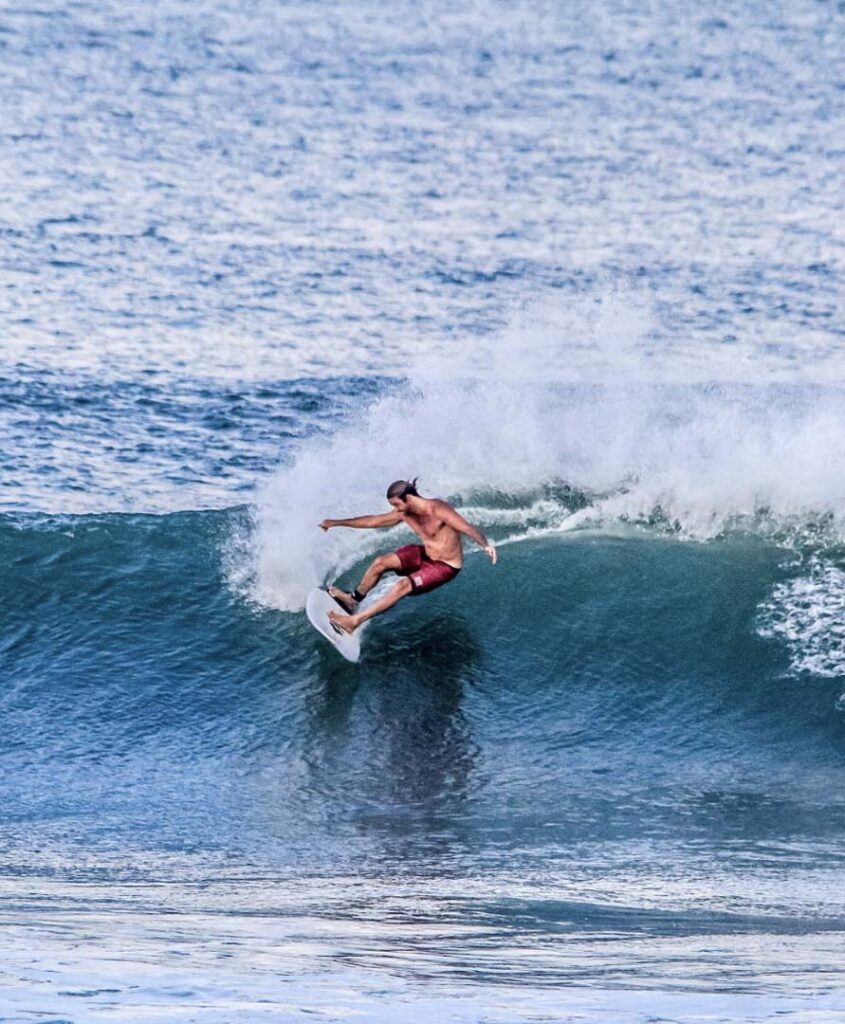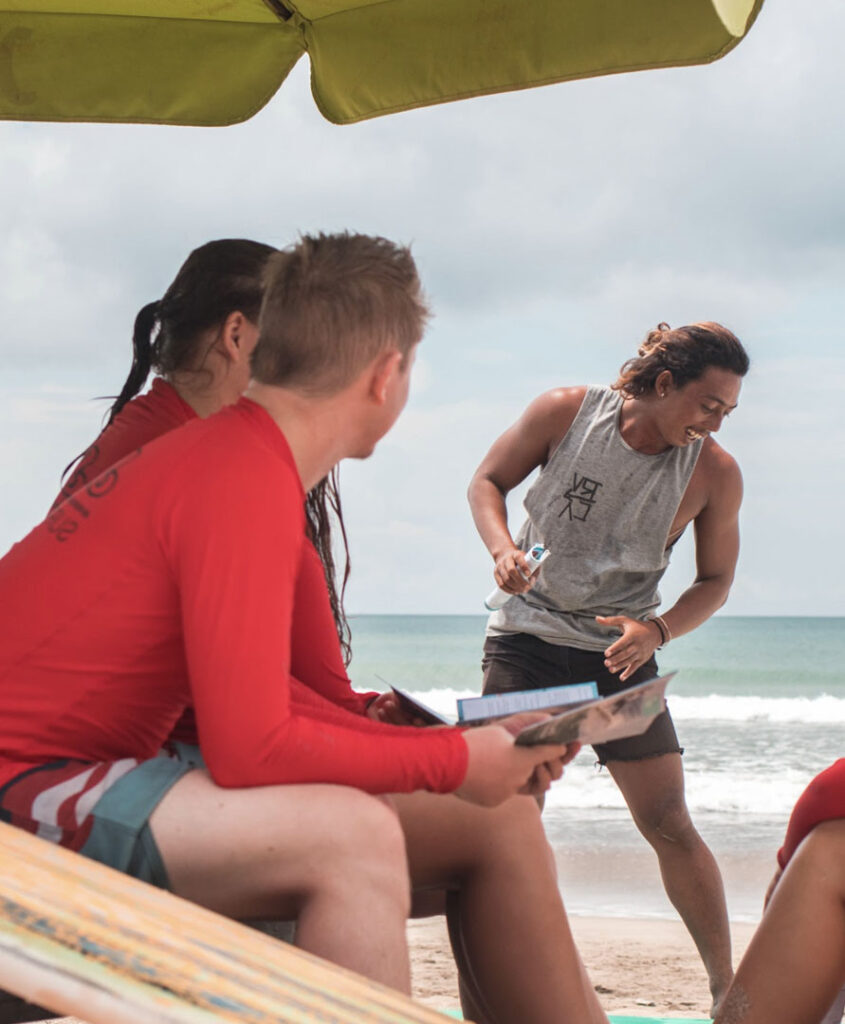SURFING
SOLID SURF & YOGA HOUSE
The Art of Surfing : A Guide to the Waves
What is Surfing?
Surfing is more than just a sport – it’s a lifestyle. It’s the art of riding waves on a board and feeling one with the ocean. For many, surfing is a passion that can take a lifetime to master. Whether you’re a seasoned pro or a beginner, the thrill of catching a wave and riding it to shore is an experience like no other.
Surfing is a thrilling water sport that has been around for centuries and has gained worldwide popularity in recent years. From the speedy maneuvers of the small, pointed shortboard to the relaxed, smooth style of the longboard, surfing offers endless possibilities for adventure and excitement. But before you can ride the barrels, you’ll need to start with the basics.

The History of Surfing
Surfing has a rich history that dates back centuries. It’s believed that the ancient Polynesians were the first to ride waves on wooden boards. Surfing as we know it today began to take shape in the early 20th century, when Hawaiian surfers introduced it to the world.
Over the years, surfing has become a global phenomenon, with surf culture influencing fashion, music, and art. Today, surfing is enjoyed by millions of people around the world and has become a multi-billion dollar industry.
The Basics of Surfing
At the beginning of your surfing journey, you’ll start in the whitewater, where you’ll learn the basics of surfing such as paddling, take-off, and glide, and practice your moves at gentle beach breaks. As you progress, you’ll learn all about the surf theory, including how waves are formed, how to read them, and how to paddle beyond the wave break to enter the lineup and go wave hunting.
The Origin of Surfing
Surfing has a rich history that dates back centuries. The Polynesians settled in Hawaii around 1720 and brought wave riding to the archipelago. It all began with bodysurfing, which involved simply sliding and surfing the waves with the body. The idea of using a tool (the surfboard) to provide the body with more buoyancy and surfing standing up on the board came later. At that time, it was not just a recreational activity, but also an important part of Hawaiian culture and religion.
The first written record of wave riding was made in 1778 by British Captain James Cook, who documented the watersport and the wooden boards in his logs. Through the publication of his texts, wave riding received attention outside of the Hawaiian islands for the first time. However, the sport disappeared completely from sight when European missionaries arrived in Hawaii and banned it in 1820.
The Second Wave of Surfing
Around 1907, wave riding came back to life. Tourism in Hawaii was booming, and sunbathers flocked to the famous Waikiki Beach. Many young Hawaiians saw their chance to earn money as lifeguards and worked as beach boys with the opening of the first surf club. Duke Kahanamoku, also known as “the Duke,” was probably the most famous beach boy. As an outstanding swimmer and talented surfer, he became famous outside of his homeland and was a kind of international ambassador of wave riding. Because Duke Kahanamoku spread surfing all over the world, he is now also known as the “Father of Surfing.”

The Benefits of Surfing
Surfing is not just a fun pastime – it also has many health benefits. Here are some of the ways that surfing can improve your physical and mental well-being:
Surfing is a great way to get your heart pumping and improve your cardiovascular health.
Paddling and standing up on the board require the use of multiple muscle groups, which can lead to increased strength and endurance.
Surfing requires a great deal of balance and coordination, which can improve your overall athletic ability.
There’s nothing quite like the feeling of being out on the water and riding waves to help reduce stress and promote relaxation.
Surfing requires intense mental focus and concentration, which can help improve your overall mental clarity and cognitive function.
Hang Loose and Shaka
In the last century, surfing has evolved from an extreme sport to a fun sport and has become increasingly popular for young and old. Learning the technique takes time. Patience is needed to find the perfect wave, and courage is required to throw oneself into the roaring ocean with the board. Hawaiians sum it up with “Hang Loose,” which means “stay relaxed.” The accompanying Shaka sign is now considered the surfer’s greeting.
The Technique
Surfing is all about technique. Here are some basic tips to help you get started:
Paddling: Paddling is the most important part of surfing. It’s important to use proper form and technique to conserve energy and catch waves.
Standing Up: To stand up on the board, you’ll need to push yourself up from a lying down position and get your feet into the proper position.
Riding Waves: Once you’re up and riding a wave, it’s important to shift your weight to maintain balance and control.
Safety: Always be aware of your surroundings and respect the power of the ocean. Never surf alone and always wear a leash to prevent injury.
Conclusion
Surfing is an exhilarating sport that offers many physical and mental benefits. With the right equipment and technique, anyone can learn to ride the waves and experience the thrill of surfing. So grab a board and hit the water – you never know where the waves might take you.
Frequently Asked Questions (FAQ)
About Surfing
Surfing is a water sport where a person rides waves on a board, typically made of foam or fiberglass, using their body weight and momentum to stay balanced and maneuver on the wave.
There are several types of surfboards, including longboards, shortboards, fish boards, and funboards. The type of board a surfer uses depends on their skill level, the wave conditions, and their personal preference.
The right surfboard for you depends on your experience level, height, weight, and the type of waves you will be surfing. It’s best to consult with a professional or an experienced surfer to help you choose the right board for your needs.
Besides a surfboard, you will need a wetsuit, leash, wax, and fins. Depending on the weather and water conditions, you may also need gloves, boots, and a hood.
The basic skills needed to start surfing include paddling, positioning, and popping up. These skills take time and practice to master, but with the right guidance and coaching, anyone can learn to surf.
The best time of year to surf depends on the location and the weather conditions. In general, surfers prefer the winter months when the waves are bigger and more consistent. However, summer can also be a great time to surf, especially for beginners.
Some safety tips for surfing include always wearing a leash, staying aware of your surroundings, knowing your limits, and respecting other surfers and beachgoers. It’s also important to check weather and wave conditions before heading out.
It is not recommended to surf if you can’t swim. Surfing is a water sport, and being able to swim is essential for your safety. It’s important to take swimming lessons before attempting to surf.
Yes, surfing is an excellent full-body workout that improves cardiovascular health, strengthens muscles, and increases flexibility and balance. It’s a fun way to stay active and healthy.



